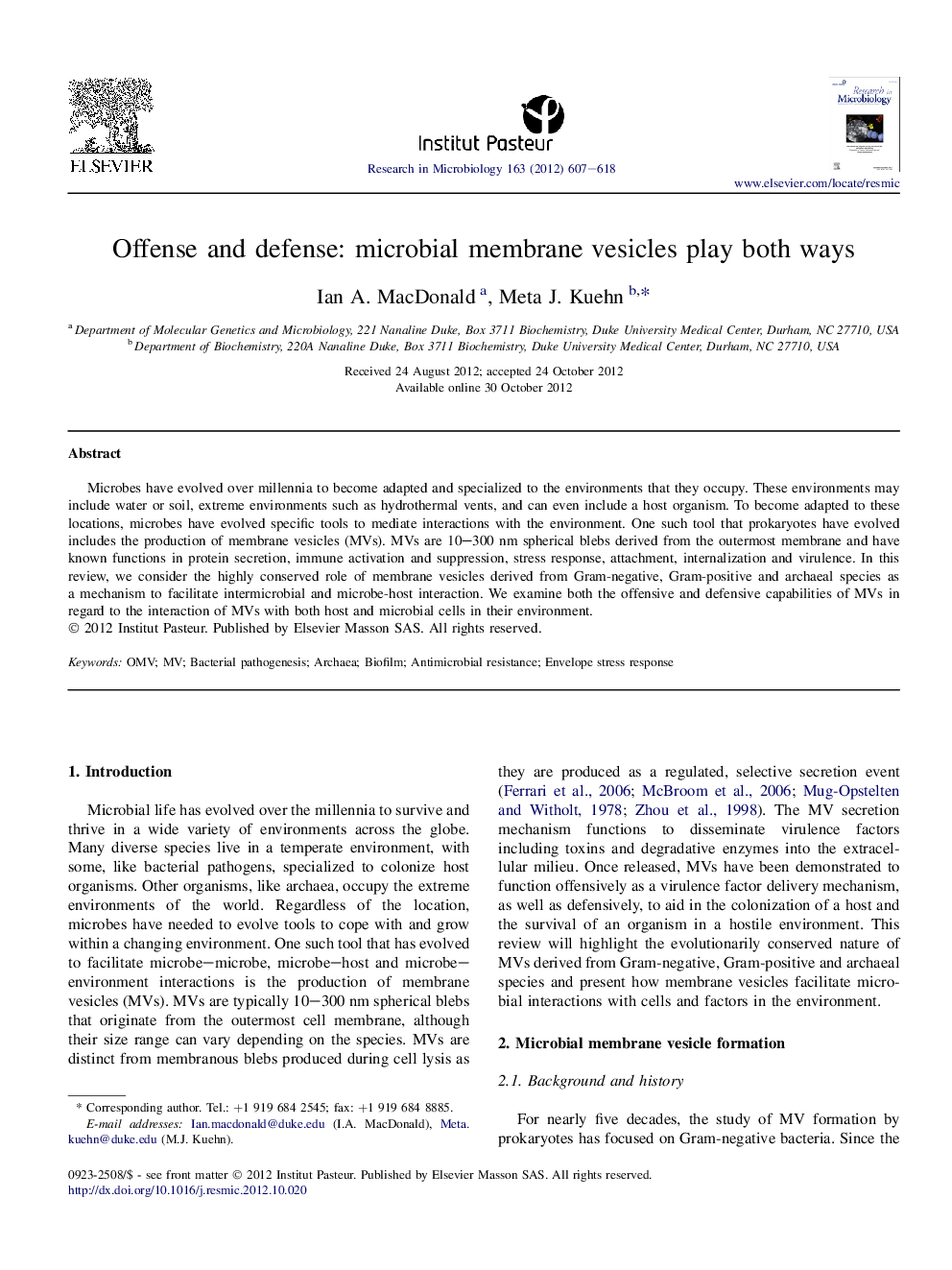| Article ID | Journal | Published Year | Pages | File Type |
|---|---|---|---|---|
| 4358768 | Research in Microbiology | 2012 | 12 Pages |
Microbes have evolved over millennia to become adapted and specialized to the environments that they occupy. These environments may include water or soil, extreme environments such as hydrothermal vents, and can even include a host organism. To become adapted to these locations, microbes have evolved specific tools to mediate interactions with the environment. One such tool that prokaryotes have evolved includes the production of membrane vesicles (MVs). MVs are 10–300 nm spherical blebs derived from the outermost membrane and have known functions in protein secretion, immune activation and suppression, stress response, attachment, internalization and virulence. In this review, we consider the highly conserved role of membrane vesicles derived from Gram-negative, Gram-positive and archaeal species as a mechanism to facilitate intermicrobial and microbe-host interaction. We examine both the offensive and defensive capabilities of MVs in regard to the interaction of MVs with both host and microbial cells in their environment.
